VW History 1930s-1945
Draft of Hitler's original design
Beetle's history dates back to Germany before World War II, the economy is bad and most automakers make expensive cars. For middle-class Germans there was a need for affordable, inexpensive cars. Ferdinand Porsche used many parts and systems, which were later used for Beetle, for small cars that it had previously worked on. In the prototype of the Type 32 made in 1934, an air-cooled four-cylinder engine designed in a mutually horizontal position and a suspension with suspension rod were used. This system, called Beetle style, was also used in other vehicles called modern technology of the time. The idea of making cars for the German people came to mind of the young Adolf Hitler while he was in prison in 1923 while reading the biography of Henry Ford. He was impressed by his production lines and success, and he is also a car fan who does not know how to drive.
Hitler became prime minister in February 1933 and revealed his interest in the German car at the Berlin Auto Show. 1934 declared that its government would make incentives for the 'public car (Volkswagen)'. Because he was impressed by Porsche's design capabilities, he gave him the task of building a 33-gallon vehicle capable of driving 60 miles at speeds that could carry two adults and 3 children. The price would be 1000 marks, so it would not be more than the price of motorbike of the time.
Hitler convinced him, although Porsche said production could not be made at this cost. In addition, he was still busy with the idea of how the head would be from the first draft to the final version.
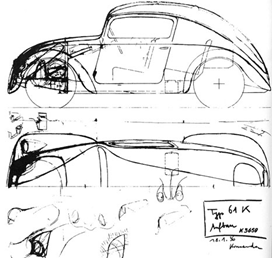
1936 Beetle Design
In late 1935, prototypes of the V1 saloon and V2 convertible models hit the road. The aluminum body of these vehicles was dressed on a classic wooden frame. In 1936, these 22 horsepower vehicles with a steel body and steel skeleton, 984 cc, could now reach a speed of 65 miles. Later, 30 prototype vehicles were developed by Daimler-Benz, although they believed that these cheap vehicles could affect the reputation of their top-class vehicles. The development work and testing phases of these prototypes were transferred to the Nazi German Workers Front, thus saving costs and a new factory could be financed. These vehicles were controlled by 200 soldiers and Workers in their SS warehouses in Stuttgart, up to their tiniest problems. Meanwhile, Dr. Porsche was commissioned to learn about the production techniques in America and to meet with German immigrants working in systems at these factories and traveled to the United States.
While the tests of the W30 prototype continued in 1937, the design changed slightly. While thinner sheets were used to reduce costs, pressed filling materials were used to keep the ceiling and body intact.
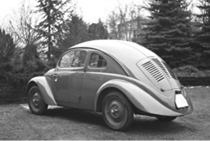
W30 Prototype 1937
In mid-1937, Erwin Komenda was working on the new body design. Eventually, since the bent sheet and the bent glass used at the rear of the vehicle were costly at that time, he introduced the idea of flat glass, and the first split-glass Beetle was born. The design of the rear windows in this way meant that there was more resource left for the curves and reinforcement of the vehicle, and the front could also be expanded. Reutter, a bus company, made a wooden model of this vehicle in Stuttgart, and Beetle remained almost unchanged until 1967. Three versions of this design in 1938; The sedan was produced as sunroof and convertible and were named 801,802 and 803, originating from the plate names.
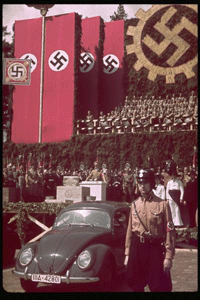
W30 Prototype 1937
In mid-1937, Erwin Komenda was working on the new body design. Eventually, since the bent sheet and the bent glass used at the rear of the vehicle were costly at that time, he introduced the idea of flat glass, and the first split-glass Beetle was born. The design of the rear windows in this way meant that there was more resource left for the curves and reinforcement of the vehicle, and the front could also be expanded. Reutter, a bus company, made a wooden model of this vehicle in Stuttgart, and Beetle remained almost unchanged until 1967. Three versions of this design in 1938; The sedan was produced as sunroof and convertible and were named 801,802 and 803, originating from the plate names.
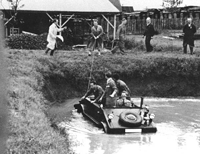
The prototype of the floating car "Schwimmwagen"
With the acceleration of the war, KdF-Wagen were put on hold and military vehicle production was focused. These vehicles, called 'Kubelwagen' and fitted on a more robust chassis with an air-cooled engine, were versions derived from public cars. In 1942 Schwimmwagen joined Kubelwagen; it was a four wheel drive vehicle that could drive on land and in the water. In 1943, more than 12,000 prisoners were employed in these jobs. Many of them were in repair work at aircraft factories. It was decided to move the Kdf factory elsewhere in order to save it from the bombardment of landing troops. Towards the end of the war, the factory returned to the production of 'buzz bombs' called V1. These bombs carried drones and they had oxygen combustion pulsejet engines, so they could travel between Germany and the UK. Due to this production, it became the target of the factory removal troops. It is estimated that more than 3500 V1 bombs were produced and dropped from London to the factory a few days before the United States turned the factory into a wreck.
VW History 1945-1985
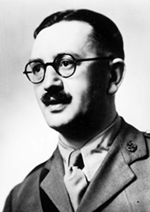
Commander Major Ivan Hirst
II. With the end of World War II and Hitler's suicide in 1945, the task of rebuilding Germany began. The country was divided into headquarters, and the command of the department with the Kdf factory was under the control of the British. Major Ivan Hirst, under the command of the Royal Electrical and Mechanical Engineers, was brought to the factory's responsibility to assess and control the possibility of resisting forces to restart Beetle production for their logistics needs. Kdf was quoted from a nearby castle and named as "Wolfsburg" and became known as "Wolfsburg Motor Factory".
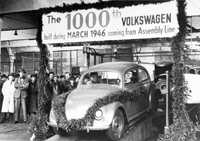
1000th car produced in March 1946
Many machines in the factory were saved from bombing by hiding in other buildings in the war. In addition, production was continued until 1946 with the production of Kubelwagen parts and old vehicles in stock. During this period, up to 1000 cars a month could come off the production line. Two other special vehicles were developed under the control of the British; Radclyffe Roadster and 4-person convertible. Radclyffe Roadster was a two-man and Major Hirst 's success, and Colonel Charles Radclyffe' s favorite during the summer of 1946. The four-seat convertible was the personal vehicle of Major Hirst.
After he was appointed as the General Director of the Heinz Nordhoff VW plant in 1948, he decided that Volkswagen needed to grow, and two more factories were opened and it was decided to build Beetle prototypes. Karmann was given the task of designing a four-person design and Hebmüller to design a two-person roadster. The Roadster design was not much different from the Radclyffe Roadster; similar roofs and side windows, and the rear engine cover, the front bonnet were unchanged, but a handmade panel was present.
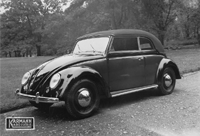
Karmann Cabriolet
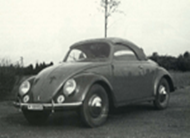
Hebmuller
In Frankfurt, the German Industrial Authority proposed to Ford to hand over the Volkswagen plant, Nordhoff predicted that Ford could provide the necessary capital reserves and remove export restrictions, and supported this idea. The Ford company studied factories and VW saloon cars and transfer plans in 1948. Nordhoff and Colonel Charles Radclyffe tried to persuade Ford to partner with Volkswagen, but this was not the time he would have had a say. In this case, Ford gave up the agreement, saying that he could not accept the partnership for an operation that would develop under Berlin control without full control and influence.
VOLKSWAGENWERK AG was founded in May 1949, and in October 1949 the Volkswagen factory was officially handed over to the Germans under the leadership of Heinz Nordhoff. In 1951, Major Hirst was discharged and began living civilian life in England.
Nordhoff founded Volkswagen America in 1955 and 32,662 Beetles were sold that year. Volkswagen became America's best-selling import car, and in 1968, sales peaked 423,008 cars.
The biggest change in the Beetle model occurred in 1971 with the introduction of the 'Super Beetle' model. The suspension with the IRS system, previously only used in American models, was integrated into the Porsche tension bar suspension system used in other vehicles, and MacPherson suspensions were introduced. Thus, these front suspensions offered larger luggage space for the fuel tank and spare tire. The engine volume in the 1302s Super Beetle was also enhanced with a 50 hp 1600 cc engine. A revised exterior body design and new flooring system have also been added to these changes.
On February 17, 1972, Beetle was on its way with confident steps, keeping the record of the most preferred vehicle, the "Ford T", despite Ford's opposition to new figures.
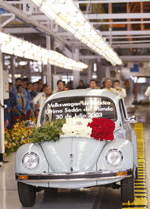
When leaving the last 'Classic' Beetle production line
The last classic, Beetle, was leaving the production line in Wolfsburg in January 1978, and it had come to an end. This was not the end for Beetle, the production of the convertible version was continued by Karmann for 2 more years, and the 20th millionth Beetle was produced in May 1981 from the factory, which opened in 1954 in Mexico Puebla. Upon 1985's high demand, Volkswagen imported Beetle from Germany until 1985.
After an astonishing 65-year history from its first launch in 1938 and its production in 1945, Volkswagen ended its Beetle production in Puebla on July 30, 2003.